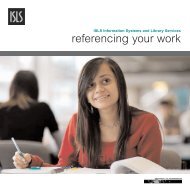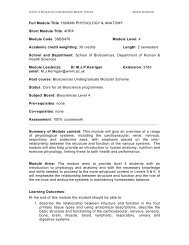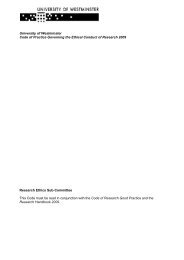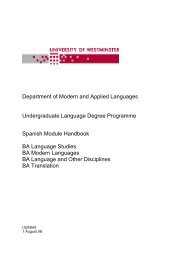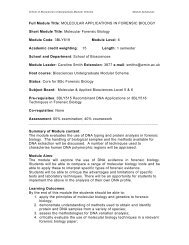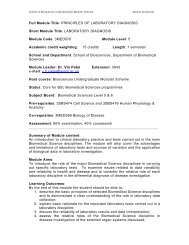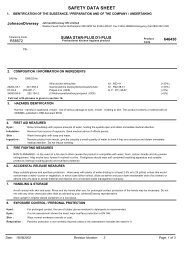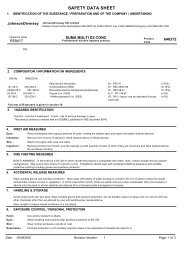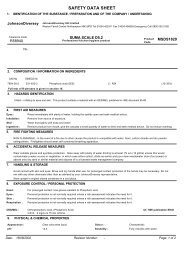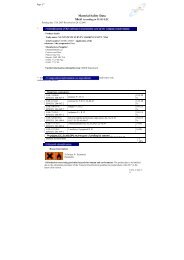CONTENTS 1. Introduction 1.1 Course Outline 1 1.2 Introduction ...
CONTENTS 1. Introduction 1.1 Course Outline 1 1.2 Introduction ...
CONTENTS 1. Introduction 1.1 Course Outline 1 1.2 Introduction ...
You also want an ePaper? Increase the reach of your titles
YUMPU automatically turns print PDFs into web optimized ePapers that Google loves.
Assessment criteria:<br />
The extent to which the student is able to demonstrate an ability to:<br />
• Derive equations and relationships.<br />
• Prove selected theorems from first principles or as directed.<br />
• Use theorems and properties in numerical examples.<br />
• Calculate or compute Fourier transforms and convolutions and interpret the results.<br />
• Use matrix algebra to analyse geometric and other transformations.<br />
• Use linear regression on experimental data.<br />
• Construct Monte-Carlo models and implement them, and then to critically appraise the<br />
outcomes.<br />
Assessment Methods and Weightings:<br />
Written examination: 50%, <strong>Course</strong>work: 50%.<br />
Sources:<br />
Essential reading:<br />
D.W.Jordan and P.Smith, Mathematical Techniques, 2 nd ed., Oxford University Press, Oxford (1998).<br />
J.James, A Students Guide to Fourier Transforms with Applications in Physics and Engineering,<br />
Cambridge University Press,(1995).<br />
Further reading:<br />
A. Gleason (translator) et al., Who is Fourier A Mathematical Adventure, Transnational College of<br />
LEX, Blackwell Science (1995).<br />
R.N. Bracewell, The Fourier Transform and its Applications, McGraw-Hill, London .<br />
DPI_Hbook 72 ©University of Westminster




